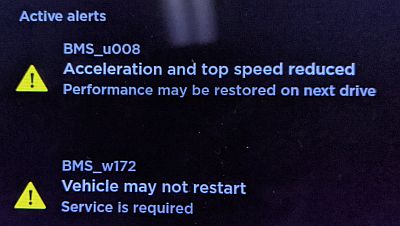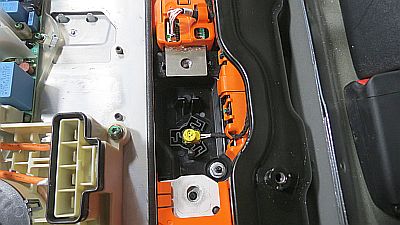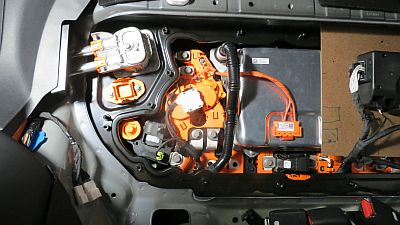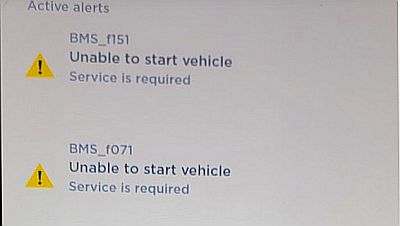The High Voltage System in Tesla vehicles also includes safety measures to ensure that their occupants are protected in the event of a collision or other emergency situation. For example, high voltage cables are insulated and protected by a waterproof and fire resistant metal casing.
Vehicle Security Systems are designed to detect any fault in the High Voltage System and automatically disconnect the battery in the event of a failure.
On the other hand, the entire High Voltage System is completely isolated from the bodywork and its isolation must be complete. Any high voltage leak, no matter how small, will generate an alert for loss of insulation and the vehicle will not be able to be driven.
The services available for High Voltage System are:
Evaluation and solution of problems related to insulation losses or high voltage leaks.
Evaluation of problems with alerts linked to the High Voltage System.
Verification of the High Voltage System.
|
|
 |
 |
|
Llamenos - Call Us +1 786 580 1941 |
TextUS +1 786 705 9030 |
Call US / Phone Office +1 (786) 293 1094 |
Alerts indicating a problem with the High Voltage System:
If you have any of the following alerts on the screen, your Tesla is having a problem related to the High Voltage System.
To identify the problem, we must carry out an evaluation and prepare an EV-Intelligent Report.
These alerts start with BMS - HVP.
 |
 |
 |
 |
Return
High Voltage System Alert List:
BMS_a035
BMS_f008
BMS_f098
BMS_f027
BMS_u026
BMS_f100
BMS_f101
BMS_f102
BMS_f103
BMS_f104
BMS_f105
BMS_f106
BMS_f107
BMS_f009
BMS_f108
BMS_f110
BMS_f010
BMS_f123
BMS_f126
BMS_f011
BMS_a016
BMS_f132
BMS_f133
BMS_f136
BMS_f137
BMS_f138
BMS_f139
BMS_f140
BMS_f141
BMS_f142
BMS_f144
BMS_f146
BMS_u001
BMS_u002
BMS_u003
BMS_u004
BMS_u005
BMS_u006
BMS_u008
BMS_w001
BMS_w007
BMS_w008
BMS_w011
BMS_f169
BMS_f170
BMS_f171
BMS_f172
BMS_w017
BMS_f016
BMS_w021
BMS_f017
BMS_w034
BMS_w035
BMS_w036
BMS_f018
BMS_u016
BMS_w047
BMS_f019
BMS_w050
BMS_f072
BMS_f129
BMS_f149
BMS_u015
BMS_u017
BMS_w019
BMS_w026
BMS_w051
BMS_w054
BMS_w059
BMS_w061
BMS_w062
BMS_f021
BMS_w074
BMS_w173
BMS_f022
BMS_w080
BMS_d001
BMS_d002
BMS_d003
BMS_d004
BMS_d005
BMS_d006
BMS_d007
BMS_d008
BMS_d009
BMS_d011
BMS_d012
BMS_d013
BMS_w072
BMS_f023
BMS_w094
BMS_f024
BMS_w100
BMS_w101
BMS_w102
BMS_w103
BMS_w106
BMS_w107
BMS_w108
BMS_w110
BMS_f026
BMS_w159
BMS_w123
BMS_a147
BMS_w132
BMS_u027
BMS_u028
BMS_u029
BMS_a086
BMS_f001
BMS_a002
BMS_w141
BMS_u018
BMS_a029
BMS_w146
HVP_w006
HVP_a007
HVP_w005
HVP_w008
HVP_w009
HVP_w010
HVP_w011
HVP_w014
HVP_w015
HVP_w016
HVP_w019
HVP_w021
HVP_w024
HVP_w025
HVP_w026
HVP_w027
HVP_w029
HVP_w032
HVP_w033
HVP_w034
HVP_w035
HVP_w037
HVP_w038
HVP_w039
HVP_w040
HVP_w041
HVP_w042
HVP_w044
HVP_w045
HVP_w046
HVP_w047
HVP_w051


